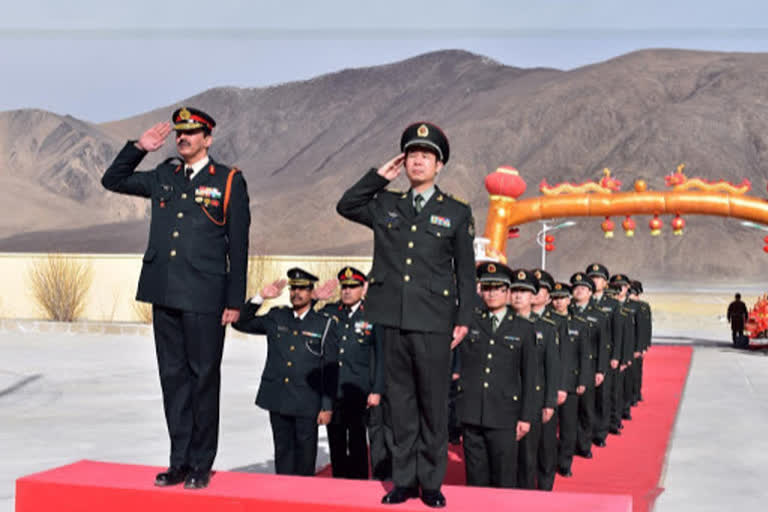New Delhi: India and China military top brass began talks on Saturday to resolve the stand-off situation in Eastern Ladakh region and de-escalation of forces across the Line of Actual Control. The meeting is being held in Moldo on the Chinese side opposite Chushul.
Indian military delegation is headed by the commander of Leh-based 14 Corp Lieutenant General Harinder Singh and the Chinese are led by Major General Liu Lin, Commander of South Xinjiang Military Region.
Both countries are engaging in dialogue to resolve the stand-off in Eastern Ladakh region, particularly at north bank of Pangong Tso where the Chinese People's Liberation Army has attempted to change status quo.
India has put forward these demands:
1. Removal all permanent and temporary structures
2. A return to status quo
The Chinese troops in large numbers have been camping at Finger 4 area of the Pangong Lake. India also matched these numbers in deployment there. The Pangong Lake is divided into 8 fingers. The mountainous spurs jutting out into the lake are referred to as fingers. So far India has been controlling fingers 1 to 4 and China controls the area between 5 and 8.
There is an Indian post near Finger 4. However, India claims the entire stretch till Finger 8. The area between Finger 4 and 8 has been a matter of dispute and has often witnessed confrontations.
Sources said that China has made a slight retreat at Galwan Valley, one of the flashpoints leading to the standoff with India, in Ladakh region. In a bid to resolve the issue, China's People's Liberation Army moved back two kilometres and the Indian Army has moved back one kilometre.
The clash took place at Pangong Lake on May 5, leaving several from both sides wounded.
READ: India, China military top brass meet to resolve stand-off
Other than Pangong Tso that is extremely sensitive the other places that are volatile in the wake of the recent escalation are Trig Heights, Demchok and Chumar in Ladakh which forms the western sector of the India-China frontier.
The trigger for the face-off was China's stiff opposition to India laying a key road in the Finger area around the Pangong Tso (lake) besides construction of another road connecting the Darbuk-Shayok-Daulat Beg Oldie road in Galwan Valley.
Sources further pointed out that the standoff was not a spontaneous reaction to India's road construction in Ladakh. Unusual activities were first noticed in few weeks before that clash.
The current standoff in Ladakh is not the usual patrolling faceoff but part of the new combative strategy that was rolled out by China after Doklam.
In 2017, there was a 73-day stand-off between India and China. The standoff was at the India-China-Bhutan tri-junction Doklam. China's road construction in Bhutanese territory was seen as an attempt to change the status quo by India and finally the road work had to be stopped.
(IANS report)



